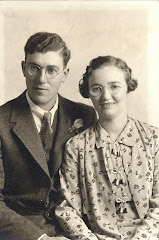Sauvie Island
"Lewis and Clark literally put the island on the map during their explorations of 1805 and 1806, when they named it Wappatoe Island. On November 4, 1805, they camped across the Columbia from the island near the confluence of the Lake and Salmon Creek rivers. On the return trip, they camped March 29, 1806 just east of Bachelor Island."
5 November 1805 (heading downriver)
“I [s]lept but verry little last night for the noise Kept [up] dureing the whole of the night by the Swans, Geese, white and & Grey Brant Ducks &c. on a Small Sand Island … they were emensely noumerous, and their noise horid.” — William Clark
30 March 1806 (heading upriver)
“Wappatoe Island is … high and extreemly fertile … with ponds which produce great quantities of the … bulb of which the natives call wappatoe … we passed several fishing camps on Wappetoe island …”— Meriwether Lewis
From Sauvieisland.org
Okay, am I the only Oregonian who'd lived in this state for over 50 years and yet had never been to Sauvie Island? Probably. What an amazing and remarkable place - and yes, like Arnold, I'll be back!
We approached Sauvie Island via the Multnomah Channel and the scenic houseboats that moor along its banks.
Though the day has dull and grey, the Sauvie Island bridge beckoned.
"Sauvie Island, in the U.S. state of Oregon, originally Wapato Island or Wappatoo Island, is the largest island along the Columbia River, at 26,000 acres...It lies approximately ten miles northwest of downtown Portland, between the Columbia River to the east, the Multnomah Channel to the west, and the Willamette River to the south. Much of the interior comprises water; Sturgeon Lake, in the north central part of the island, is the most prominent water feature. The land area 32.75 sq miles...Most of the island is in Multnomah County, but the northern third belongs to Columbia County. The Sauvie Island Bridge provides access across the Multnomah Channel from U.S. Route 30.
"The island is predominantly farmland and wildlife refuge. There were 1,078 year-round residents at the 2000 census. There is an industrial zone and small grocery store in the southeast corner, near the bridge. Bicyclists flock to the island because its flat topography and lengthy low-volume roads make it ideal for cycling." From Wikipedia.
"The original inhabitants of the island were the Multnomah tribe of the Chinook Indians. There were 15 Multnomah villages on the island, and the 2,000 islanders lived in cedar log houses 30 yards long and a dozen yards wide. Each family would have its own entrance and fire pit within. They hunted, fished and gathered plants year-round. The Multnomahs were Flathead Indians. Babies were tied to a flat board, with another piece of wood fixed across the baby’s brow, pressuring the skull to flatten in a continuous line from crown to nose, resulting in a look respected for distinction and superiority."
"Women wore a mantle of animal skins and a fringed skirt of cedar bark, anointed their hair with fish oil and wore ornaments of white shells called hiaqua. Wapato, the arrowhead-leafed wild potato, was a major food source. The women would go out in a lake or pond with a canoe, and harvest the bulbs by digging into the mud with their feet. Wapato was roasted and eaten, dried, stored and traded to other tribes." From Sauvieisland.org
"During the next decades the Native Americans weathered outbreaks of smallpox, syphilis, measles and tuberculosis. Then in 1829 a horrifying epidemic of a fever known as the ague swept across the land. Within two years, the natives were nearly extinct. Less than a decade later the Hudson Bay Company, with its Fort Vancouver just across the Columbia, sent a French dairyman, Laurent Sauvé, to establish a dairy. Around 400 cattle were swum across the river from the fort. Sauvé was to produce butter for the Russian settlements in Alaska with whom Hudson Bay had a contract. The island came to take his name."
"In 1850 the U.S. Congress passed the Donation Land Act to reward pioneers for their hardships in settling the West. A married couple could claim 640 acres, half for the husband, half for the wife. By 1856, most of Sauvie Island was staked out by settlers who farmed the island’s exceptionally fertile soil. Beginning in the 1920s, dikes were built to protect houses and farms from the freshets that flooded the island every year in early summer, and sometimes again later. In 1950 a small bridge was built to connect the island to the mainland. Before that, people traveled by boat or ferry to cross the Multnomah Channel."
"The island is approximately 24,000 acres—about 15 miles long and about four miles wide, almost the same size and shape as Manhattan. The northern 12,000 acres are owned by the Oregon Department of Fish and Wildlife and managed as the Sauvie Island Wildlife Area. The lakes and natural areas are a major stop on the Pacific Flyway and a bird-watching mecca. The southern half of the island is graced by farmland, including Century Farms (some that still bear the names of the early pioneers), farmers’ markets, an organic CSA (community-supported agriculture) and many U-picks." From Sauvieisland.org
Aloes and Agaves from Cistus Nursery


























Awesome information Beth! Im looking forward to the end of June when the strawberries are ripe. It is a fast, fast season so I marked it on my calendar so I don't forget! They are amazing to eat and make jam with. We go there quite a bit when it gets warm, <3 Jen
ReplyDelete